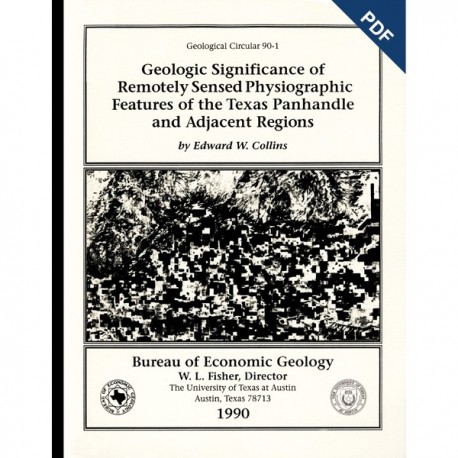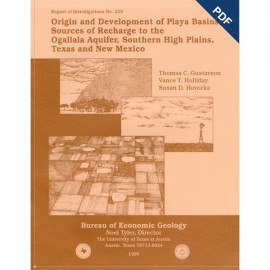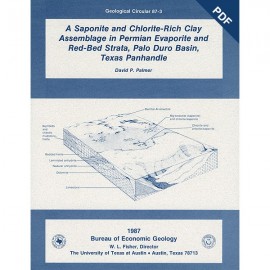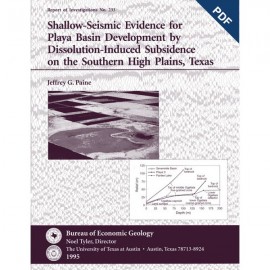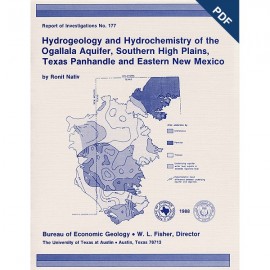Geological Circulars
-
Books & Reports
- Reports of Investigations
- Guidebooks
- Udden Series
- Geological Circulars
- Down To Earth
- Atlases of Major Oil and Gas Reservoirs
- Texas Memorial Museum Publications
- Environmental Geologic Atlas of the Texas Coastal Zone
- Mineral Resource Circulars
- Other Reports
- Seminars and Workshops
- Handbooks
- Submerged Lands of Texas
- Symposia
- Annual Reports
- Open File Reports
-
Maps & Cross Sections
- Thematic Maps
- Miscellaneous Maps, Charts & Sections
- Geologic Atlas of Texas
- STATEMAP Project Maps
- Geologic Quadrangle Maps
- Cross Sections
- Highway Geology Map
- Energy and Mineral Resource Maps
- Shoreline Change and Other Posters
- Wilcox Group, East Texas, Geological / Hydrological Folios
- Bouguer Gravity Atlas of Texas
- River Basin Regional Studies
- Featured Maps
- Posters
- Teachers & the Public
-
Geological Society Publications
- Gulf Coast Association of Geological Societies
- Alabama Geological Society
- Austin Geological Society
- Corpus Christi Geological Society
- Houston Geological Society
- Lafayette Geological Society
- Mississippi Geological Society
- New Orleans Geological Society
- South Texas Geological Society
- GCS SEPM Publications
- Historic BEG & UT Series
Geologic Significance of Remotely Sensed Physiographic Features of the Texas Panhandle… Digital Download
GC9001D
For a print version: GC9001.
GC9001D. Geologic Significance of Remotely Sensed Physiographic Features of the Texas Panhandle and Adjacent Regions, by E. W. Collins. 39 p., 15 figs., 2 tables, 4 appendices, 1990. doi.org/10.23867/gc9001D. Downloadable PDF.
To purchase this publication in book format, please order GC9001.
ABSTRACT
Remotely sensed features such as linear drainages, escarpments, ridges, and aligned playas have been identified on Landsat imagery (scale 1:250,000) of the Texas Panhandle and adjacent regions to allow comparison of these features with detailed regional and site-specific geologic data. Physiographic subdivisions of this area are the High Plains, Canadian Breaks, Rolling Plains, Pecos Valley, and Raton section. Geologic field data collected at some of the linear drainages, escarpments, and ridges indicate that orientations of about 70 percent of these linear features coincide with orientations of either fracture sets, faults, or dikes in the Canadian Breaks, Rolling Plains, Pecos Valley, and Raton section, where bedrock commonly crops out or is covered only by thin soils. However, orientations of aligned playas on the low-relief High Plains, where bedrock outcrops are sparse, do not coincide with fracture orientations measured nearby at the Caprock Escarpment and in the Rolling Plains. Thus the aligned playas of the High Plains may not reflect systematic fracture sets in bedrock.
Statistical analysis of lineament orientations and lengths for the central Texas Panhandle and east-central New Mexico indicates that the lineament interpretations only partly reflect the orientations of the regional fracture sets and the general orientations of the structural grains of subsurface strata. Remotely sensed nonlinear features identified on the High Plains are large (diameters up to 15 km) topographic basins and an anomalous elongate area of sparse vegetation and sand hills (approximately 190 km long and 12 km wide). Some of the topographic basins are alkaline lake basins, whereas other basins are drained but have older lacustrine deposits cropping out within them. The topographic basins may indicate areas that have been affected by deflation or dissolution of calcrete or halite beds. The sand hills area has no known structural geologic control.
Keywords: lineaments, Palo Duro Basin, remote sensing, Texas Panhandle
Citation
Collins, E. W., 1990, Geologic significance of remotely sensed physiographic features of the Texas Panhandle and adjacent regions: The University of Texas at Austin, Bureau of Economic Geology, Geological Circular 90-1, 39 p. doi.org/10.23867/gc9001D.
